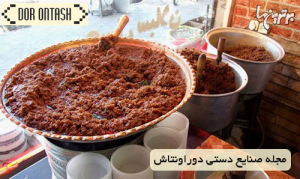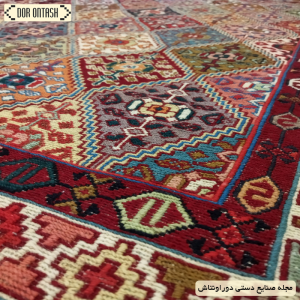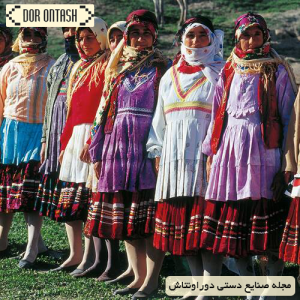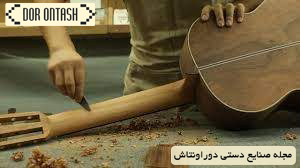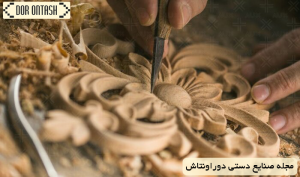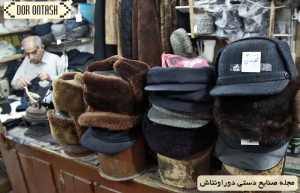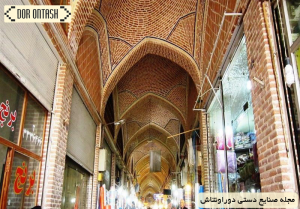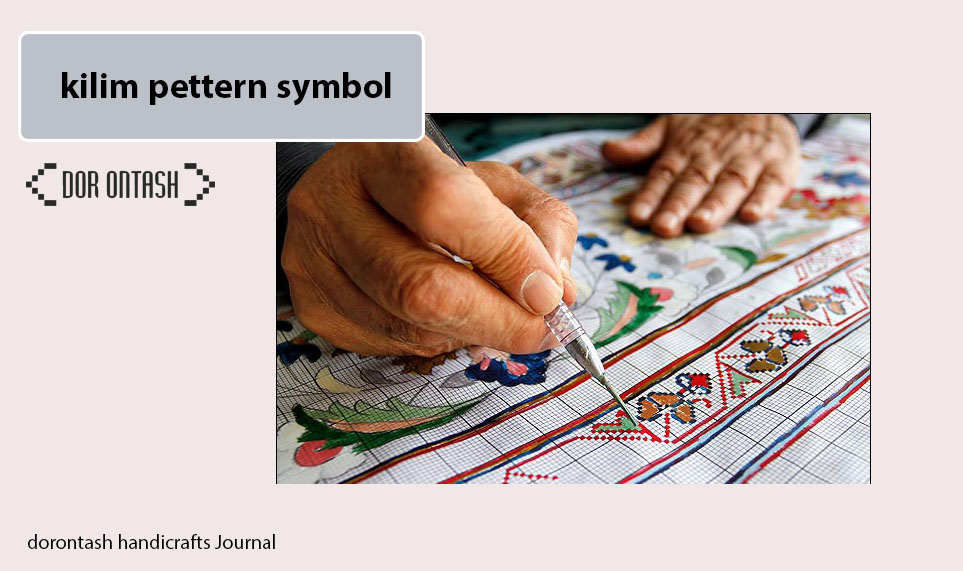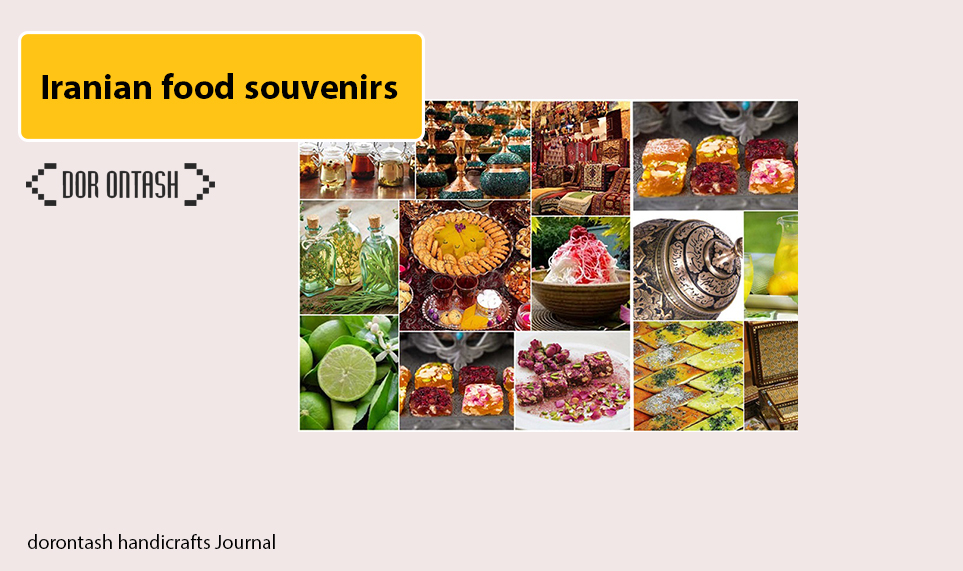The most complete introduction of souvenirs and handicrafts of Ardabil
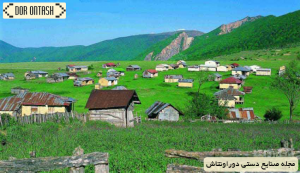
Ardabil souvenirs and handicrafts are a gift from the green land of Beheshti springs. In fact , Iran’s handicrafts have their own charms in all regions. Ardabil province is one of those popular destinations that attracts many travelers due to its thermal and mineral springs. This province is located in a mountainous region and welcomes its guests with cold winters and mild summers. Maybe the name of this province is tied to the delicious Sablan honey, but there are other choices for buying souvenirs in its market. The people of this country, like other regions of Iran, have a hand in art; They have used local materials and tools to create a spectacular effect and give you a good souvenir of your trip. Today’s report of Rosiyato Tourism Service introduces you to some souvenirs and handicrafts of this beautiful country.
The most famous souvenirs and handicrafts of Ardabil
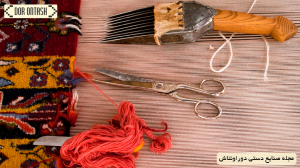
Perhaps the first thing that comes to your mind when you hear the name of Ardabil is Sablan honey, Sarshir and its delicious local butter; But these are only a small part of the various foods and handicrafts of Ardabil. Ardabil handicrafts, which are often used as souvenirs, are very attractive and lovely and are the art of the villagers and nomads of this region. The active and artistic villagers of this area rotate their life by producing and supplying all kinds of handicrafts.
It is interesting to know that Ardabil handicrafts are exported to other countries and have attracted many fans. In the rest of the article, we will introduce the complete handicrafts of Ardabil.
Sablan honey|Ardabil souvenirs and handicrafts
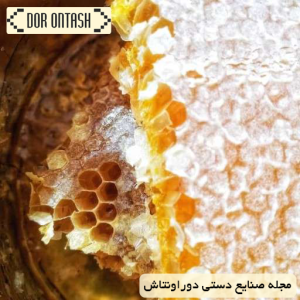
One of the most important areas of honey production in the whole country is Ardabil and Sablan region. Ardabil honey is very tasty because of the plains of oregano, coriander, goon, thyme and acacia. Ardabil honey has different flavors, among which we can mention the honey of goon and thyme, honey of forty plants and honey of coriander. Each of these honeys have medicinal and therapeutic properties. For example, coriander honey is appetizing, tonic and useful for infections.
A variety of halva souvenirs of Ardabil
One of the delicious foods and souvenirs of Ardabil is Halva, which is prepared in different flavors.
Black halvah or Qara halvah is one of these halvahs. This halwa is prepared from ingredients such as wheat germ flour, butter, walnuts, sesame, etc. Finally, grape juice is added to this halwa, which is the reason for its dark color.
Other halva in this region is called white halva or agh halva and it is mainly made from rice flour. This type of halva is mostly used in religious ceremonies and holidays.
Ginger halva is another type of halva in this region and other regions of East Azerbaijan, in which ginger is used.
White halvah or Agh halvah
This halwa belongs to Khalkhal city of Ardabil province. Agh means white and Agh halva is mostly cooked on religious occasions such as Eid al-Fitr and congratulating the marriage of young couples. Near Eid al-Fitr, families give white halvah to each other to strengthen family ties.
Rice flour is the main ingredient of this halva. After preparing it, they add ginger, rose water and vanilla, and decorate it with saffron.
Baklava
Baklava is one of the delicious sweets. It is prepared according to people’s taste in each city. Making baklava in Ardabil is also unique. They use milk, eggs, walnuts, and pistachio powder to prepare it. To buy baklava, just go to the sweet shops in Ardabil.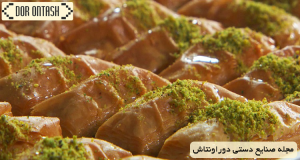
Sweetness is close
This sweet is very popular and is prepared with egg whites, almonds, sugar and finally almonds and pistachio slices are poured on it. The texture of this sweet is crispy and it tastes good. This sweet is also popular among Turkish people.
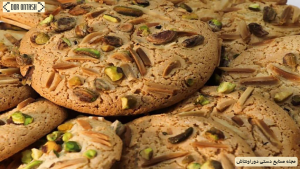
Chocolate bar
This chocolate is made with cocoa and is one of the most delicious local chocolates in Ardabil. The basic ingredients of chocolate are milk, sugar, butter, cream, milk and walnut kernels.
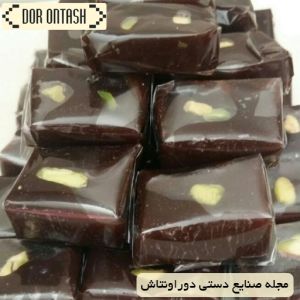 unleavened bread
unleavened bread
In most cities, traditional unleavened bread is baked, which has a special aroma. Fatir is made in Ardabil with sour dough powder, sugar, water, walnuts and cinnamon. This dough is very delicious. If you travel to Ardabil, be sure to prepare unleavened bread and drink it with butter and honey.
Handicrafts
Carpet weaving
One of the most important handicrafts of Ardabil is the rugs of this region. These handicrafts of Ardabil are woven with happy and beautiful colors and most of its designs are the result of the art of women in this region. In carpet weaving, more than samovar, tray, crab, seal, and dragon designs are used, and its production hub is mostly Anbaran, Moghan and surrounding villages. The raw materials of Ardabil handicrafts are made from warped cotton thread and silk.
Related link: Buying Iranian handwoven rugs
Jajim Bafi
Jajim is another handicraft of Ardabil, which is mostly done in Khalkhal villages. Jajim is produced in various colors and designs, most of its designs are earrings, flowers, gems and almond rings. Jajim Baf artists mostly use it to make rugs, bedspreads, rugs, chair covers, backs, sofas and bags, which are very beautiful and attractive. Jajim is usually woven in the size of 90 to 120 square centimeters, which can be found in various designs and colors in the markets of Ardabil with Safa.
Varnish rug
Ardabil province is one of the important areas for the production of all kinds of handwoven rugs such as carpets, rugs, rugs and rugs in the country, and thousands of people in the rural and nomadic areas of this province are engaged in weaving them.
Varni of this province is the best production of hand-woven carpets in the province, which are woven by women and girls without a plan and in a mental way, and it has a special reputation in the domestic markets and European countries.
The raw materials for the production of varnish are wool used in the weft and cotton thread used in the thin tarpod.
In the past years, after picking the wool of the animals, it was spun with traditional spinning spindles and after washing, they dyed it in a very basic way with chemical dyes, but today dyeing is carried out according to the basic methods to weave varnish with the desired quality. The villagers have been placed.
The patterns that are imprinted on the vernis are the environment and its reflection in the minds of the women and girls of the verni weavers and the mental diagram of their potential intellectual abilities and talents.
The traditional patterns common in the production varnishes of the province are mainly influenced by the shapes of animals and wild animals of the region and the pattern of deer, deer, herd, turkey, chicken and rooster, cat, snake, eagle, sheep, tiger, camel, lion, fox, jackal. , peacocks and local birds.
The rural and nomadic artist women and girls of the province create a summer atmosphere in their handwovens by using sharp and gentle colors and with the pattern of small and beautiful flowers in the varnish texture and create a new spring in the small flower garden of their home.
Varnishes produced in the province in the field of lacquer, navy, cream, white, onion and light blue colors with animal prints in the middle and a margin of maximum width of 20 cm on the sides and in the form of full silk, silk floor varnish and full varnish Pashmi is produced in the sizes of back, padri, carpet, side, cushion and carpet.
Maghanlo, Gilko, Gablo, Hossein Hajblo, Iman, Haj Ahmad, Jalilo, Bran Alia, Sefli, Gozli, Qara Qabaq and urban areas of Aslandoz and Parsabad, Mohammad Taqi Kandi village, Qara Aghaj, Tolachi and Ziveh are part of Garmi city. And the villages of Sarikhanlu, Sahib Divan, Parikhan, Kojanaq, and Tabbaq, which are part of Meshgin Shahr, are considered important areas of varnish production in the province.
Related link: buying all kinds of Varni handwoven rugs
Plas is another handicraft of Ardabil and it is a type of carpet-like rug that has a coarser texture compared to it. These blankets are made of wool and do not absorb the moisture of the ground, and therefore it will be very popular among the dear nomads to cover the bottom of their tents. Cotton and wool are used for plus weaving, the price of which is relatively cheap, which can be easily found in the markets of Ardabil.
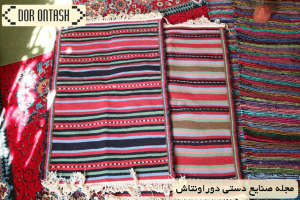
Bag weaving
One of the traditional handicrafts of Ardabil province is called Chante Bafi. The texture of the bag and the type of its raw materials are completely like carpet and varnish, and the only difference is in its dimensions and size. Chente consists of two small pieces of woven rectangular carpet with dimensions of approximately 30×40 cm, which are elegantly sewn together on three sides (in the form of envelopes) and have two colored tassels on the lower two sides and a handle like on the upper part. It is a bag.
copper dishes
Many people of Ardabil make copper, and these industries are very prosperous in Ardabil. You can get good quality copper utensils in this city and cook delicious food in them.
Local clothes
Sewing local clothes is one of the souvenirs and handicrafts of the people of Ardabil. The people of Ardabil sew these clothes with their artist’s hands in different and beautiful designs and colors. The local dress of the nomads is an example of these dresses.
Traditional instruments of Ardabil
The most famous handicraft of Ardabil is making traditional instruments. These instruments are very useful and necessary for traditional music. Ardabil artists make these beautiful instruments with special precision and elegance.
There are different types of musical instruments: tinbak, santoor, three-string, fiddle, Azari instrument, etc., which are made with the wood of walnut, pepper, boxwood, and mulberry trees. A pleasant and beautiful voice is heard.
The cities of Khalkhal, Meshkin Shahr, Ardabil are skilled in making these instruments. Buying these instruments can be the best souvenir for people interested in music.
Inlaid and inlaid wood
Maraq is one of the handicrafts of this city, whose raw materials are tree wood, camel bone, oyster, copper, brass, silver, gold, inlay and ivory. To create these art products, they choose the desired wood and cut it to the desired shape and size and put it in place. The art of wood carving is used to make tables, panels, mirror frames, chess boards, etc.
Carving is an art in which engraving and carving on wood is done based on beautiful designs and motifs, the motifs of which are mostly plants. The raw materials of this art are more than wood, and the stronger and more compact the wood, the more beautiful and durable the inlay will be.
Pottery; One of the most delicate handicrafts of Ardabil
One of the oldest handicrafts produced by the people of Ardabil is pottery, which dates back to the Parthian period and even before that. In Ardabil pottery, which is considered one of the handicrafts of this country, flowers are prepared from clay that has a low purity and high adhesion. Then, it is shaped by the hands of Marman Aziz artist and turns into a type of Ardabil handicraft with pea to red color. This product has many uses after cooking and is unglazed.
If you are interested in pottery , you can read the article about the art of pottery .
turning; Embossed patterns on wood
Kharati is one of the handicrafts of Ardabil, which involves turning wood with a horizontal lathe. The raw materials of this great art are types of sapidar wood, walnut, sparrow’s tongue, alder, and elm, and the harder and stronger the wood, the more delicate works can be done. If you are interested in handmade items made of wood, you must visit the markets of this city. The city of Serain is one of the main fans of Kharati, and you can visit this wonderful city by renting a villa and suite in Serain.
Embroidered hats|Souvenirs and handicrafts of Ardabil
Products that are produced using skin and tanned leather in a traditional way, such as poustin, leather hat and charuq, are among the main handicrafts of Ardabil province, and hat embroidery can be considered the most prominent of these handicrafts in Ardabil province.
The use of leather hats has been popular in Ardabil province since the Qajar period, but with the passage of time and the introduction of industry and industrial products, these days we see less people using this type of hats.
Hats, which were commonly used in ancient Iran and were used by kings and emirs since the past, in addition to being used for decoration and comfort, showed the occupation, race and social class of people. In the past, different types of hats were used, such as taj, dihim, anthers, kolahraste, dastar (a turban similar to a hat), bashalq (similar to one’s own hat) and egg-shaped felt hats; that felt hats were common among people of Iranian tribes .
Hat sewing materials and steps
The anthropologist of cultural heritage and handicrafts of Ardabil province said: In the sewing of hats in Ardabil province, they try to use high-quality materials, and for this reason, the use of the skin of sheep with curly hair is considered in this profession and since time In the past, even though the development of this job has become a dream, but now we have made all our efforts to revive this profession.
Felt rugs | Ardabil souvenirs and handicrafts:
In the spring season and after the nomads pick wool from the sheep, these wools are given to the felting workshops operating in Meshginshahr city to be used for making felt.
Reviving and authenticating this art from handicraft fields will play an important role in employment, sustainable rural and nomadic development, generating income and then preserving nature and introducing regional culture and attracting tourists.
This field of handicrafts is active in the northwest of Iran in the city of Meshginshahr in an industrial form in workshops, but with its documentation, the file of this industry is prepared to be registered in the works of the list of national works.
The main use of felt in the construction of nomadic pavilions is to hold a felt ritual in Adehchaman Yilaq, Meshginshahr city, was a step in the direction of introducing this industry.
Glass cutting|Souvenirs and handicrafts of Ardabil:
The oldest finishing work on cut glass is divided into two categories:
a) physical engraving of glass with a diamond (milling)
b) physical engraving with a copper wheel.
A) Physical engraving with a diamond tip (milling):
It is used by using a type of manual milling cutters, whose tips are generally made of diamond steel, which is restrained in a holder. It looks like a pen or pencil, and some artists and craftsmen prefer a diamond cutting tip whose tip is made of tungsten carbide.
The shape of the diamond tip is a pyramid with four and six sides, and when the tip of this pyramid scratches or breaks the glass, the process of drawing and designing patterns is done. In fact, the scratches are a series of small and delicate cuttings, which are certainly influenced by the degree of hardness of the glass in the engraved texture.
b) Physical engraving with a copper wheel:
engraving with a wheel is a type of decoration that has been used since the time of the Egyptians and Romans. Today, this cutting is done by using small electric motors that rotate a disk, and artisans draw lines on the glass with the help of special stones whose degree of hardness is higher than the hardness of glass. The speed of turning wheels and turning discs is directly related to the type of lathe, and the greater the depth of the desired lathe, the higher the speed of the lathe should be.
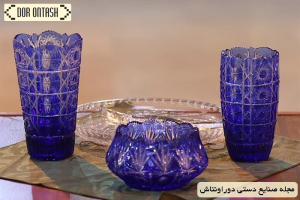 Where to buy Ardabil souvenirs and handicrafts?
Where to buy Ardabil souvenirs and handicrafts?
Ardabil has many markets for visiting and shopping. Usually, shopping is one of the good and attractive parts of travel that attracts travelers. Ardabil handicrafts can be found in most of its markets, but you can get these beautiful souvenirs mostly in the old and traditional markets of this city.
Ardabil Grand Bazaar; Art of the Safavid era
One of the historical and spectacular collections of Ardabil is its large bazaar, which is covered and has traditional and original architecture. This market is located in the center of the city and it is very easy to access and has a very long history. This market is very popular among tourists and travelers of Ardabil and you can find various items you need in this market. When you start walking in this market, its historical atmosphere will remain in your mind forever.
Shah Ismail Khatai Bazaar; Historical passage
This passage, which is one of the handicraft shopping centers of Ardabil, still has traces of history. This market faces the tomb of Sheikh Safiuddin Ardabili and the variety of its products is very large. This market is very popular with tourists because it is next to the tourist attractions of Ardabil.
Bileh Sawar border market; Purchase from border zero point
Ardabil handicrafts; A souvenir of this heavenly city
Ardabil is one of the ancient and ancient cities of Iran and attracts many travelers and tourists due to its natural and historical attractions. There are many souvenirs and handicrafts of Ardabil, including: carpet weaving, jajim weaving, salt box weaving, glass cutting, karaghi stove, plus weaving, pottery, saraj, turning, knitting, inlaying and wood carving, musands, khorjin weaving, tapestry and bags. We have briefly explained each of them. This city has many souvenirs that you can buy to remember the great moments you spent in this city.
pesrian kilim bags is one of the famous handicrafts of Iran, which has gained many fans in Yemen for several years

